Hello! My name is Luna Li, and I’m going into my fourth and last year at Colorado State University majoring in Zoology and minoring in Conservation Biology. Ever since high school, I knew that I wanted to pursue a career in zoology or wildlife biology, and my passions have only grown since then. I have never been able to picture myself at a traditional desk or office job, and after working with the Colorado Natural Heritage Program (CNHP) as an intern in the Siegele Conservation Science Internship, I now know that I love living and working in the field. Through this internship, I was able to gain important field skills and experiences as well as learn valuable life lessons that have helped me grow both as a person and a future researcher. During the summer, I was able to join many different projects and was exposed to topics ranging from habitat restoration to botany to zoology. Whether they were day trips out of Fort Collins or week-long camping trips in various destinations in Colorado and even in Wyoming, every single project out of the 10+ projects I participated in provided me with refined field skills, in-depth knowledge on the topics in each project, and a boost of confidence as an emerging field researcher!
Preble’s Meadow Jumping Mouse Research Project
One of my favorite projects that I participated in was when I helped Robert Schorr, CNHP Zoologist, with his research on the threatened Preble’s Meadow Jumping Mouse (PMJM) species at the Air Force Academy in Colorado Springs. For one week, I participated in this study that has been ongoing for more than 25 years to better understand the threatened PMJM population in Colorado. Another intern and I assisted Rob set up transects near riparian areas, and we baited traps each night and checked them for the targeted species in the morning. Besides PMJM, we also caught a lot of other small mammals like Deer Mice, Voles, etc., and I gained a lot of experience in identifying these different small mammals. The highlights of every morning were catching a PMJM, helping the researcher with measuring weight and identifying sex, and watching the researcher scan for a passive integrated transponder (PIT) tag to see if this individual has been captured before. Newly captured mice were fitted with a PIT tag that’s injected underneath their skin without hurting them, like microchipping a pet cat. I have worked with small mammals before, so I knew this was going to be an amazing project! My favorite part of each day was early in the morning when we checked all the traps for mice; it felt like Christmas morning opening presents because you never knew if there was going to be a fun surprise waiting for you. It was the morning of the last day I was on this project, and I was checking trap #1 on transect A, and there was not one, not two, but three baby voles in the same trap! I was so surprised to find three little voles in the same trap, and later Rob told me that they’re probably all siblings and followed each other in. Finding these cute little babies was definitely the perfect way to start a great day.

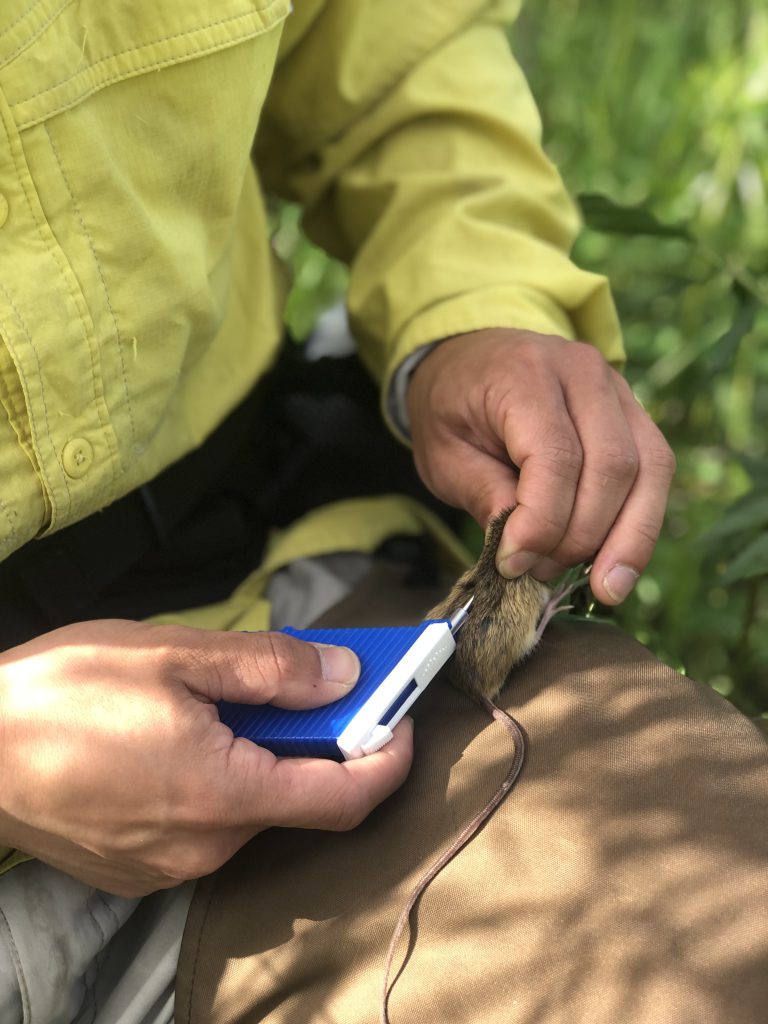
Greenback Cutthroat Trout Spawning Project and Boreal Toad Egg Collection
Another really interest project I was able to join was when a few other interns and I got the opportunity to help with Greenback Cutthroat Trout spawning as well as observe egg collections for Boreal Toads. For one day only, we got to assist researchers and field technicians from the U.S Forest Service and the Colorado Parks & Wildlife department with collecting eggs and milt (trout sperm) from Greenback Cutthroat Trout, an incredibly endangered trout species. Once thought to be extinct by the 1930s, a few wild populations of Greenback Cutthroat Trout were found in the late 1950s, and ever since then, they have been carefully protected and managed, and even designated as Colorado state’s fish species. The other interns and I assisted professionals to collect trout from net traps, check for marks and pit tags, weigh and take measurements, and record data. We got the incredible opportunity to watch technicians skillfully squeeze the eggs and milt out of live fish into bowls and gently scoop out debris from the bowls, so that these fertilized eggs are ready to be transported to hatcheries to be raised in captivity for future re-introductions. Afterwards, we also got to watch professionals collect Boreal Toad eggs to be raised in captivity for future releases as well as got to actively handle these wild toads! I never thought that I would love holding trout or amphibians this much, but being able to hold a wild endangered toad species made my day so special! We learned how each toad has a special pattern on their stomachs that act as fingerprints for individual identification. I was so surprised as to how easy it was to catch them; unlike frogs, we just scooped them up in one swift motion and was able to hold them with minimal resistance. Holding this little adorable creature in my hands, I felt the joy of a kid holding an animal for the first time!
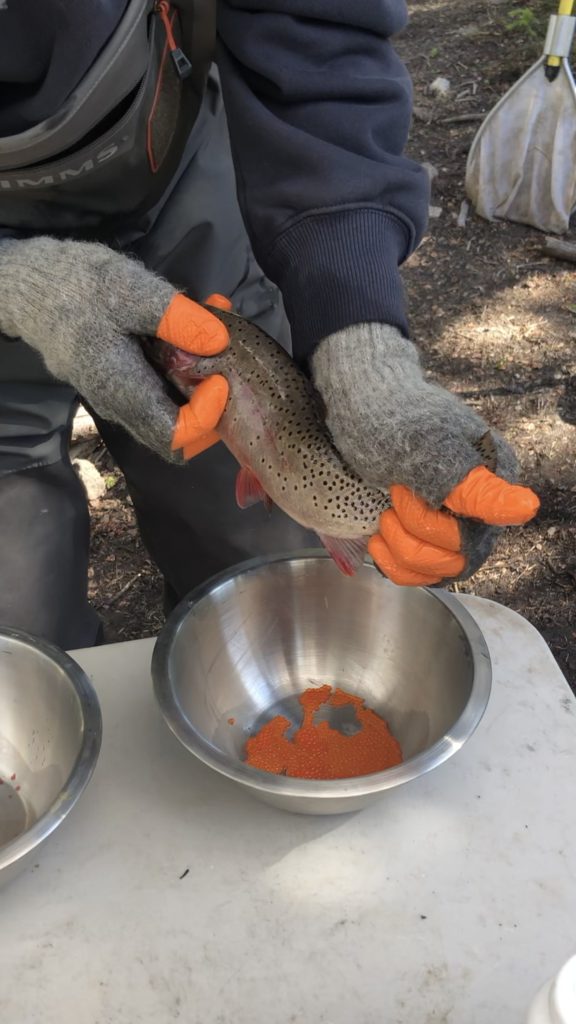
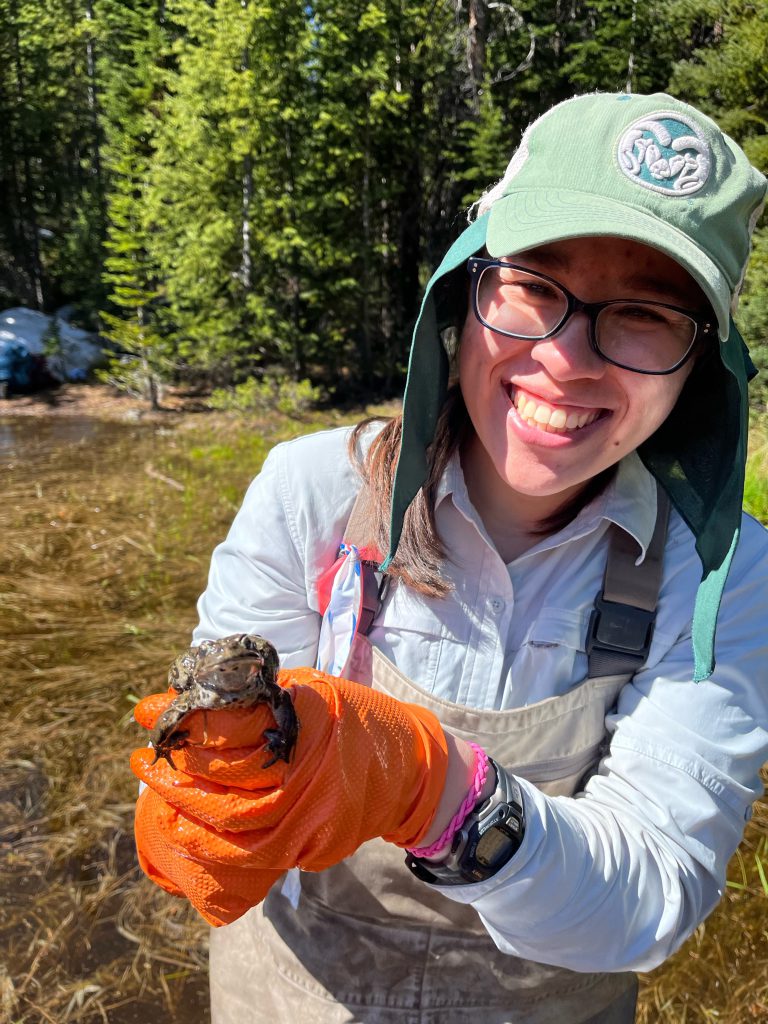
Electrofishing and Macroinvertebrate Collection Project
As a perfect way to wrap up the summer, I joined a project the last week of this internship where I got to assist researchers in electroshocking and collecting fish for measurement-taking and lavaging as part of an ongoing research project evaluating aquatic-riparian foodweb responses to large wildfires, such as the Cameron Peak Fire of 2020 that burned through the Arapaho and Roosevelt National Forests in Larimer and Jackson Counties and Rocky Mountain National Park. Specifically, this research project is looking at the balance of prey resources following fires and post-fire flooding results in prey/resource production from riparian areas. Working with researchers and field technicians, I assisted in setting up transects in riparian areas near the CSU Mountain Campus, collecting sediment and macroinvertebrate samples, and electroshocking fish for data collection. I often worked at the trout processing station, and learned how to differentiate between Brown Trout, Brook Trout, and Cutthroat Trout, how to measure body length and weight, and how to properly handle trout. I also got to watch as skilled technicians lavaged fish to collect the macroinvertebrates from their stomachs to better understand their diet. I was only a part of this project for a week, but it has forever changed my views on trout. I never thought that I would love trout this much, and I enjoyed working with fish more than I ever imagined! There were rough times, like helping out with electroshocking fish; the rushing stream current that threatened to sweep me away, the uneasy footing and slippery rocks that caused me to fall into the stream multiple times, the bulky and leaky chest waders that were one size too big, and the incredibly well-camouflaged fish that seemed to disappear into the stream when I missed them with my net. However, I have never had more fun in my entire life! I loved every minute of it, the good and bad and in-between moments, and I would never trade it for a comfy desk job. I now have the best memories and stories to tell my friends and family, and I have the bruises and blister to prove it.
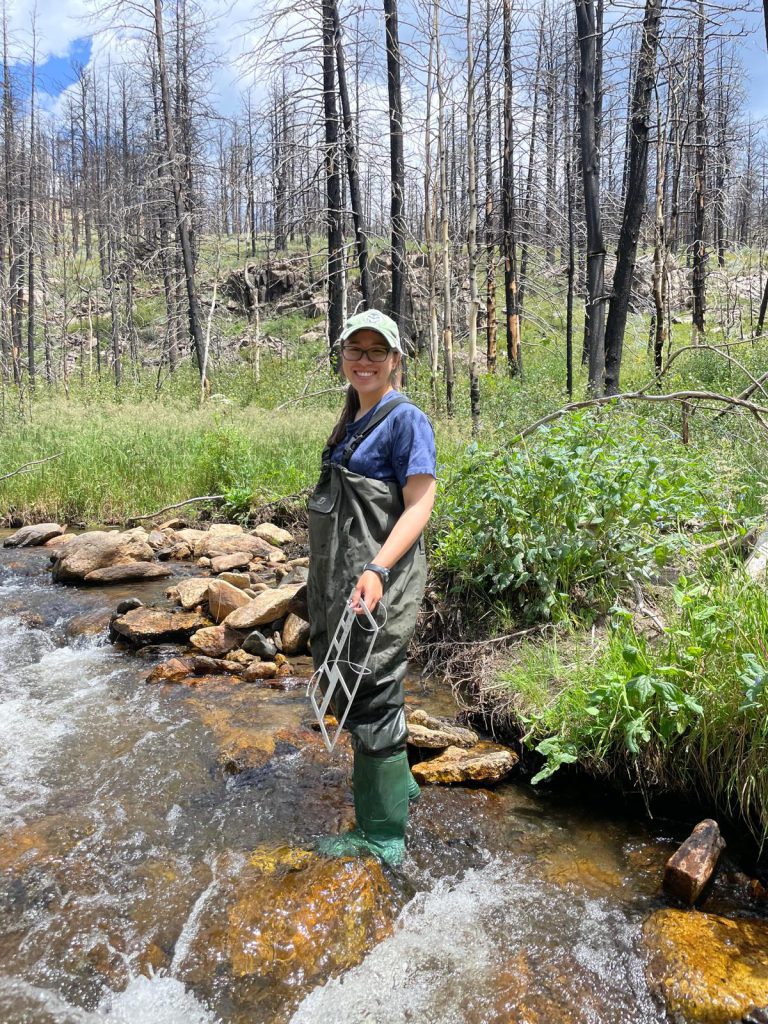
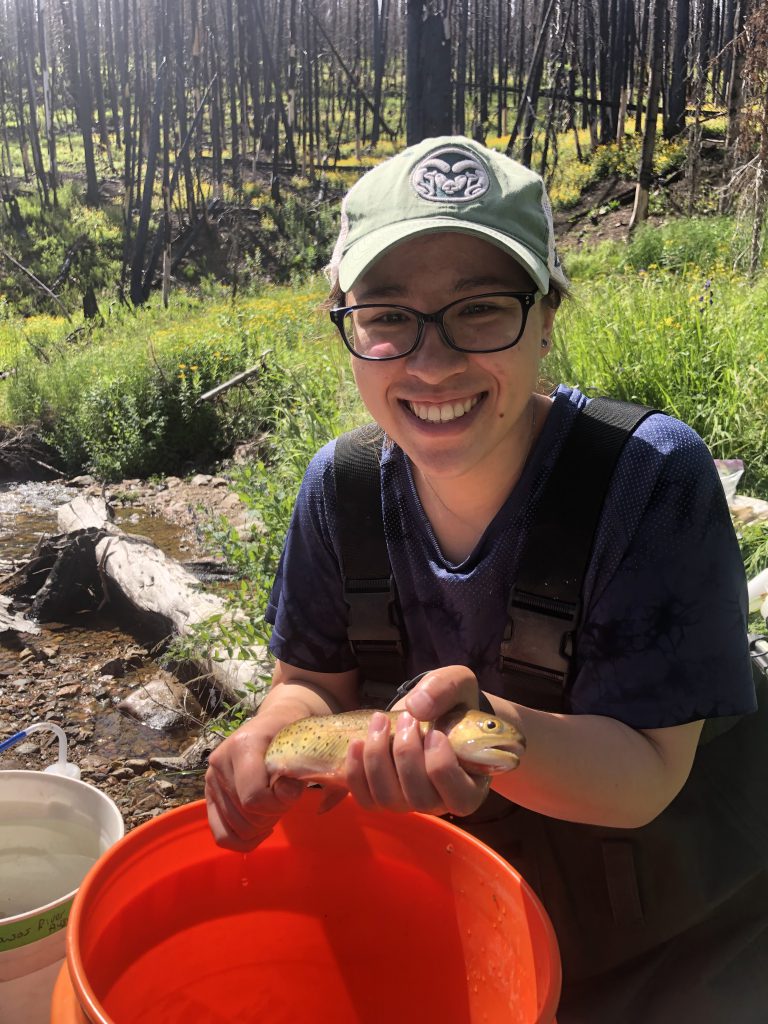
Overall, this internship has made my summer before senior year unforgettable and absolutely amazing! I have gained so much, both valuable technical skills and treasured life lessons. I have met so many seasoned and phenomenal people, who have helped me understand the importance of gaining experience in field work. With their guidance, I realized that experience is just as important as education and have decided to take a year or two after undergraduate school before going to graduate school to obtain some more field work experience. I realized that I want more time to decide on graduate programs and not rush to get a higher degree of education right after undergraduate school. And so, my current goal after graduating with my bachelor’s degree is to get a field research-based internship or a field technician position for a year or two while searching and applying to graduate school. I am so honored that I was accepted into this internship and to have been a part of CNHP. This internship has changed my life for the better, and I can’t wait to share my experiences with the next group of interns next year!




